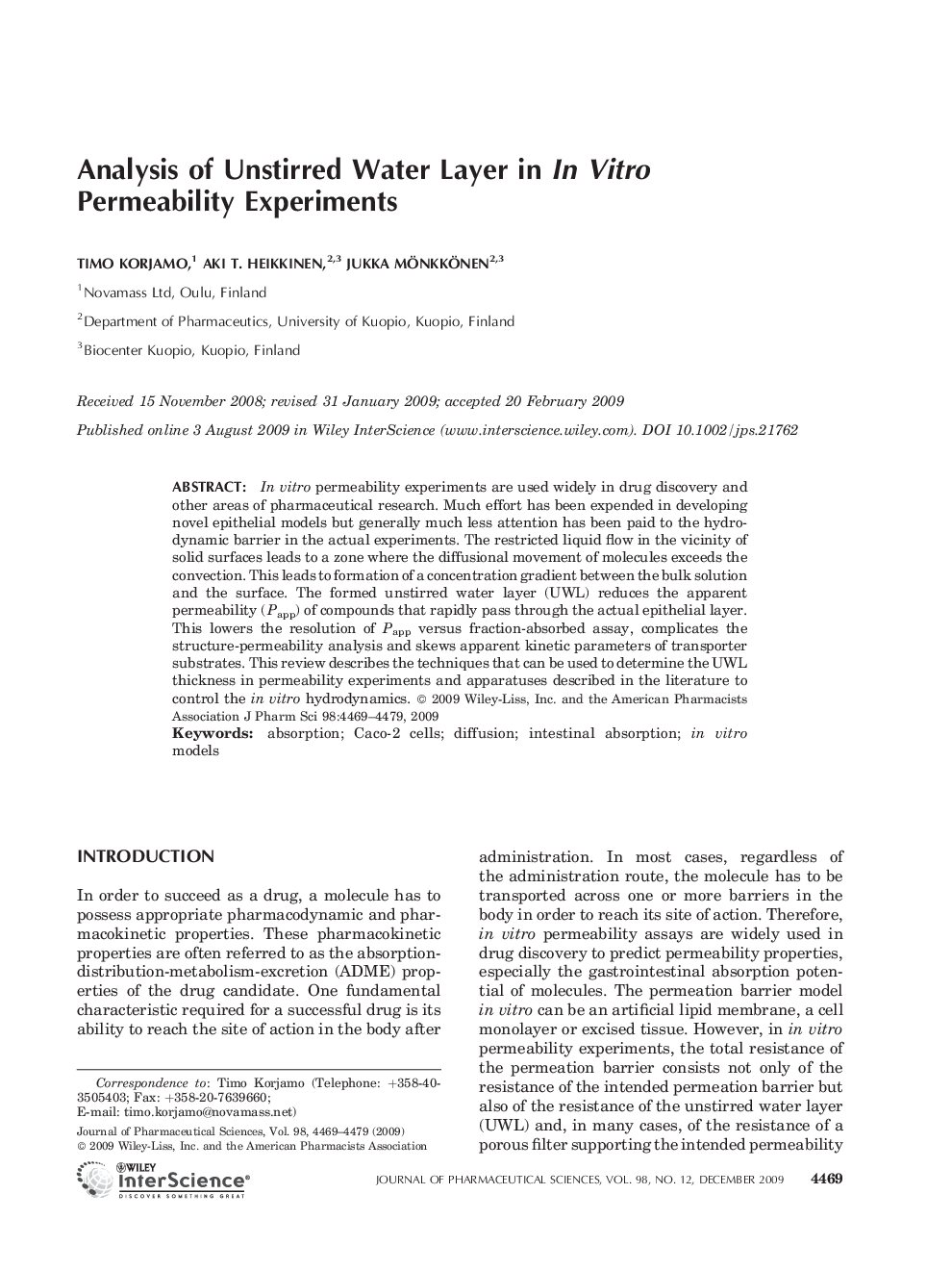| Article ID | Journal | Published Year | Pages | File Type |
|---|---|---|---|---|
| 2486561 | Journal of Pharmaceutical Sciences | 2009 | 11 Pages |
Abstract
In vitro permeability experiments are used widely in drug discovery and other areas of pharmaceutical research. Much effort has been expended in developing novel epithelial models but generally much less attention has been paid to the hydrodynamic barrier in the actual experiments. The restricted liquid flow in the vicinity of solid surfaces leads to a zone where the diffusional movement of molecules exceeds the convection. This leads to formation of a concentration gradient between the bulk solution and the surface. The formed unstirred water layer (UWL) reduces the apparent permeability (Papp) of compounds that rapidly pass through the actual epithelial layer. This lowers the resolution of Papp versus fraction-absorbed assay, complicates the structure-permeability analysis and skews apparent kinetic parameters of transporter substrates. This review describes the techniques that can be used to determine the UWL thickness in permeability experiments and apparatuses described in the literature to control the in vitro hydrodynamics. © 2009 Wiley-Liss, Inc. and the American Pharmacists Association J Pharm Sci 98:4469-4479, 2009
Related Topics
Health Sciences
Pharmacology, Toxicology and Pharmaceutical Science
Drug Discovery
Authors
Timo Korjamo, Aki T. Heikkinen, Jukka Mönkkönen,
